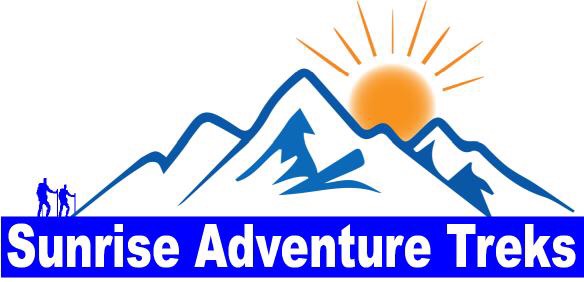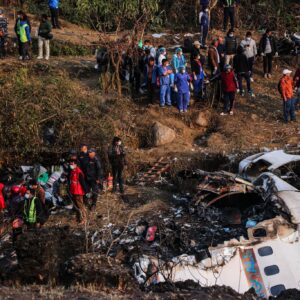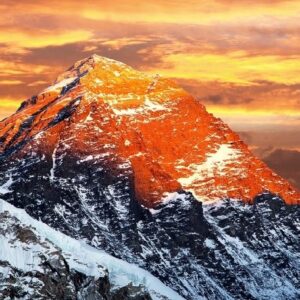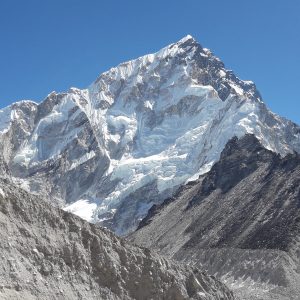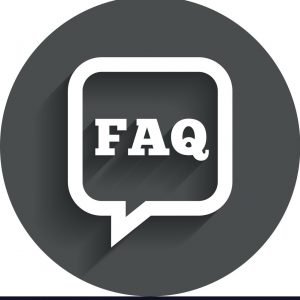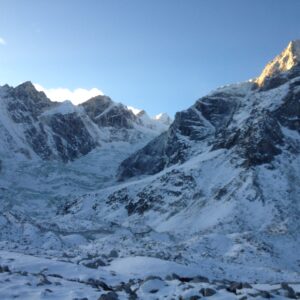
Trekking in Nepal FAQ | Nepal Travel FAQ
 01 Jan, 1970
01 Jan, 1970
Nepal is the best place for different adventures and trekking in Nepal. Many trekkers raise questions how about Nepal trekking? Nepal is the land of exotic beauties of wilderness and having beautiful hidden landscapes. The world's highest peak Mount Everest and Light of Asia Gautam Buddha was born in Nep al. Nepal has more than thousands of mountains that have names and are unnamed. Nepal contains eight among the 10 highest peaks of the world.
Nepal Trekking
Nepal has home to more than thousands of snowcapped mountains which is a core attraction for trekkers. Nepal Trekking and hiking in Nepal are the topmost adventures activates in Nepal. Since 6 decades before trekking in Nepal was first to initiate. Nepal has mainly three regions Mountain region, the Hilly region, and Terri / Plane region. Thus, the hilly regions and mountain regions are the prime destinations for hiking and trekking in Nepal.
Similarly, Kathmandu and Pokhara are the main bombed city for the tourist before and after the trek, they will meet each another. Mount Everest region, Annapurna region, Langtang, Dolpo, Manaslu, Kanchenjunga, Ganesh Himal are the top trekking area in Nepal. Hiking in Nepal is completely different than the past. Now days trekking in Nepal is quite a facility of accommodation and maintain of trail comparison to past trek. Most of the trekking trail has well equipped and good facility hotel and guest house.
Everest base camp trek, Annapurna base camp, Kanchenjunga trek, Manaslu circuit, Annapurna Round, Dolpo trek, Langtang Gosaikunda trek, Ruby Valley, and many more are popular treks in Nepal. There are more than 100 routes of trekking trails in Nepal which are prime attractions for tourists.
You need to know some FAQ (Frequently Ask Question) before you Nepal travel/ trekking in Nepal which is mentioned below-
When is the best time to go trekking in Nepal?
Many people raise the question of when is the best season for Nepal trekking? Nepal has manly four different seasons, Spring, Monsoon, Autumn, and Winter season. So spring (March to May) and autumn (September to November) are the best seasons for trekking in Nepal. Temperature and visibility are the best in spring and autumn. Likewise, the monsoon is cloudy and raining and winter is quite cooler and freezing even a few people can do trek in the monsoon and winter season but need to passion regarding weather.
How difficult is trekking/ hiking in Nepal?
Nepal trekking is varied and the difficulty depends on your trek routes and altitude. Below 3000 meters is an easy trek and 3000 to 4000 meters is a moderate trek and 4000 meters to above is a hard trek it all depends on our different routes of the trek. However, the difficulty of trekking also depends on your previous experience of walking, daily exercise, hiking, cycling, jogging, swimming, etc.
How long walk each day while during the trek?
Normally you have to walk 6 to 7 hours is about 15 to 20 kilometers per day to reach your trek destination. Even walking kilometer varies on the altitude of the trek. As you trek higher can’t ascent 20 kilometers. Therefore distance of the trek depends on trekking routes and altitude. SO trekking time and distance differ in your physical fitness and previous experience of the trek.
Are a trekking permit and TIMS card required?
Obviously, you should need trekking permits and a TIMS card before you go trekking. You have to obtain, different national park permits, conservation area permits, restricted area permits, etc. The trekking permit and package depend on your routes of trekking. So everything Sunrise Adventure treks will manage your permits and TIMS card before you start the trek.
What are the packing gears lists for trekking?
Trekking gears depend on trekking season and trekking routes. However, while you trek higher and need to bring extra warm clothes and gear it depends on the season and trek area. Furthermore, information about trekking gears can choose from here.
What about meals and accommodation during the trek?
You can get different types o national and international cuisine on the trek. You can have Indian dis, Italian, Continental, Chinese, Nepali dishes. On the other hand can get boil water, mineral bottled water, and next free tap water during the trek. Regarding beverages can have different types of beverages and alcoholics’ drinks have to bring extra enough cash for you additional drinks.
What about travel insurance during Nepal trekking?
Traveler insurance is quite important while you are travelling overseas. Trekking and climbing to the high Himalayas travelers insurance help you if in case of any emergency sickness, loss of baggies, etc. Therefore we recommend you have proper travel insurance of your medical, accidental, and rescue insurance which is proper secured for your trip.
What happens if I fall sick during trekking?
Sickness and accidental is no one knows. While you have AMS sickness like diarrhea, dizziness, fever, headache, etc. I this situation our guide will provide you first aid medicine. Our guide will bring first aid kits for the whole team. Sometimes mountains altitude sickness may be dangerous so if in that case you have to consult with our guide. You have to drinks enough water, not to rush walk so trek slowly.
Even if you are not getting better our guide will lower down you and have extra acclimatization as needed. If in case you needed emergency evacuation or helicopter rescue will arrangements for it this your traveler's insurance will cover the helicopter chopper and medical cost.
Which are the best top ten trekking in Nepal?
There are numerous trekking trails in Nepal because Nepal has many great Himalayas. Among them below are the best top ten trekking in Nepal-
- Everest base camp trek
- Annapurna base camp trekking
- Manaslu circuit trek
- Annapurna circuit trek
- Everest Gokyo lake trek
- Upper Mustang trekking
- Langtang Valley trek
- Ghorepani / Poonhill trek
- Upper Dolpo trek
- Kanchenjunga trek
What are the types of trekking?
There are mainly two types of trekking camping trek and tea house trek. Camping trek/ tented trekking is a classical trek. Everything lodging and foods have to bag packed by own selves. Camping trek is quite expensive than tea house trek. These days most of the trekking trails have the facility of tea house trek.
What about my guides and porters?
Our guides and porters are well experienced and professional guide you while you travel in Nepal. Some of our guides have 5 to 20 years of experience in the field of guiding and even our porters too. All Sunrise Adventure treks guides and porters are from local origin so they are experts will provide the first-hand service. Normally, 1 porter is for two guests to carry their baggage so the porter will carry about 20 kilograms.
What about communication on the trek?
Of course, you will have communication while on the trek. You can do communication either via cell phone from our guide and porters or via satellite phone from the hotel. While you are with the big group will have a satellite phone call to communicate. Some of the trekking trails don’t cover network towers, therefore, you need to inform our guide a bit earlier before you need to communicate.
Is there electricity available during the trek?
Most of the places on trekking have good electricity and some places tea houses are run with solar power and a backup system. Therefore, you need to have an extra battery or need to pay extra for charging your phone, camera any electrical devices.
Is it safe to travel solo females on a trek?
It is 100 % safe to travel solo females during the trek. Our guides and porters are well concerned about the solo women. Our staffs are well known and take care of female rights and protocols. Therefore we do very well take care and safety trek even solo women while trekking in Nepal.
Do you provide airport pick up and drop?
Of course, we do provide you both airport pick and drop which is also mentioned in your trip package. Even though, you have to inform us earlier during your booking process for airport pick and drop. So Sunrise Adventure treks airport representative will pick up and drop at the airport.
How can I pay for the trip can I pay via credit cards in Nepal?
There are few options for the payment system of your trip to Nepal. You can pay either via credit card, cash payments, or bank transfer before you start your trip. You have to make full payments before your trip starts.
Are there ATMS facilities available on the trek?
Only some places have ATM facilities available on the trek. You have to take enough Nepali rupees before you start your trek. Likewise, there is an ATM facility available in most of the part of the city so can use an ATM while sightseeing and touring in Nepal.
How difficult is Nepal trekking?
Nepal trekking difficulty depends on the altitude and route of trekking. Normally three types of trekking on the basis of difficulty an easy, moderate, and hard trek. Below 3000 meters is easy to trek, Trek up to 4000 moderate trek and trek above 4000 meters plus is a hard trek. However, trekking difficulties determine on trekking trail and height and your physical and mental fitness. If you do regular exercise like morning walk, gym, swimming, yoga, and previous trekking experience makes your trek level of difficulties.
Is Nepal safe to travel to?
Of course, traveling in Nepal is safe. There is no civil war and conflict in Nepal it’s completely safe to travel. While you go trekking need to be aware of the weather and consoled with your guides who have frequently did the same trek and he knows everything about the situation and weather while during trekking.
What are restricted area trekking and tour?
Those trekking areas which need special permits and need to go trekking via a trekking agency with a guide are called restricted area trekking. Those restricted area treks are boarding with China so any foreigners should take an authorized guide from the official trekking agency permit issue from Nepal Immigration Department. Restricted trekking is like off the beaten trail so trail and accommodation have not well equipped.
